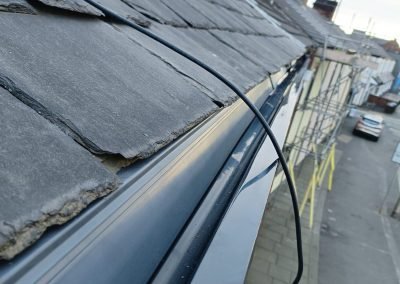CONSERVATORY GUTTER REPAIRS
REQUEST A FREE ESTIMATE
ROOFING PROBLEMS
FIXING CONSERVATORY ROOFs IN BURNLEY & pendle
Addressing these roofing problems typically involves regular maintenance, such as cleaning gutters, inspecting seals, and replacing damaged panels.
Upgrading insulation and ventilation can also help mitigate issues with condensation and temperature extremes.
For persistent or severe problems, consulting a professional roofing specialist with experience in conservatories is recommended.

1. Leaks and Water Ingress
Leaks are one of the most common problems with conservatory roofs. Poor installation, damaged seals, or degraded roofing materials can allow water to penetrate, leading to water damage inside the conservatory.
2. Condensation
Condensation can form on the inside of a conservatory roof, particularly in colder months. This is often due to poor ventilation, insufficient insulation, or the use of incorrect materials that do not provide adequate thermal protection.
3. Cracked or Broken Panels
Conservatory roofs often use glass or polycarbonate panels. These panels can crack or break due to impacts from falling debris, severe weather, or general wear and tear. Damaged panels compromise the roof’s integrity and insulation properties.
4. UV Damage
Over time, exposure to UV rays can degrade roofing materials, particularly polycarbonate panels. This can cause discoloration, weakening of the material, and reduced effectiveness of UV protection.
5. Poor Insulation
Many older conservatories have inadequate insulation, making them too hot in the summer and too cold in the winter. Modern materials and techniques can improve insulation, but if not properly installed, the conservatory can still suffer from temperature extremes.
6. Sagging Roof
A sagging conservatory roof can be caused by structural issues or the weight of accumulated snow and debris. This can lead to further damage and leaks if not addressed promptly.
7. Blocked Gutters and Downpipes
Conservatories often have their own guttering systems. If these gutters and downpipes become blocked with leaves, dirt, and debris, water can overflow and cause leaks or water damage to the roof and walls of the conservatory.
8. Seals and Flashing Deterioration
The seals and flashing around a conservatory roof can deteriorate over time due to weather exposure. This can lead to gaps and potential water ingress points.
9. Noise
Certain roofing materials, especially polycarbonate, can be noisy during rain or hailstorms. This can be a significant annoyance, especially if the conservatory is used as a living space.
10. Algae and Moss Growth
If the conservatory roof is shaded or has poor drainage, it can become a breeding ground for algae, moss, and lichen. This not only looks unsightly but can also damage roofing materials over time.
11. Structural Movement
Conservatories, particularly those attached to older buildings, can suffer from structural movement. This can cause misalignment of the roof panels and seals, leading to leaks and other issues.
12. Difficulty in Repairs
Conservatory roofs can be challenging to repair due to their design and materials. Finding matching materials and ensuring proper sealing can be problematic, especially for older conservatories with discontinued products.
Why is maintaining conservatory roofs important?
Addressing these roofing problems typically involves regular maintenance, such as cleaning gutters, inspecting seals, and replacing damaged panels. Upgrading insulation and ventilation can also help mitigate issues with condensation and temperature extremes. For persistent or severe problems, consulting a professional roofing specialist with experience in conservatories is recommended.




